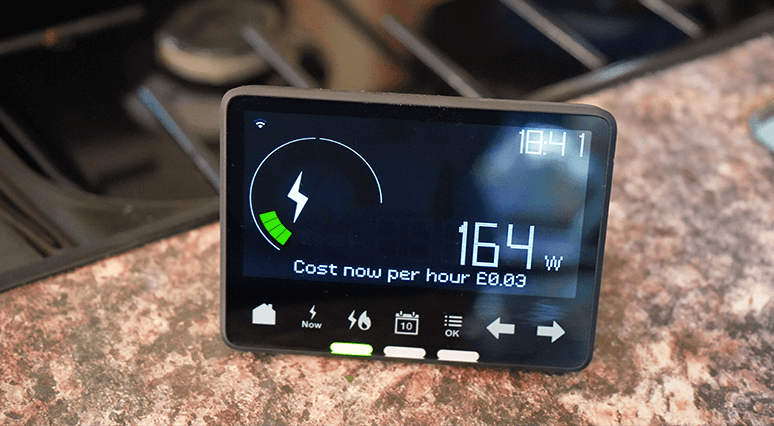Croydon Health Services (CHS) NHS Trust employ more than 3,800 staff and provide integrated NHS services, caring for people at home, in schools, and health clinics across the borough as well as at Croydon University and Purley War Memorial Hospitals.
Croydon University Hospital provides more than 100 specialist services and more than 350,000 outpatient appointments every year. The Trust also performs more than 25,000 procedures annually. The hospital is home to the borough’s only Emergency Department, a new facility opened in December 2018, as well as 24/7 maternity services, including a labour ward, midwifery-led birth centre and the Crocus home birthing team.
Along with this level of activity and complexity across the trust, comes a demand for the right data and technology solutions to meet all their varying requirements.
CHS have been working with CACI for over 10 years to meet their evolving cost and income data requirements. We spoke with Head of Costing and SLR, Lillian Auma, to find out a bit more about how CACI’s NHS patient level costing solution Synergy4 is helping improve costing-based decision making at the trust.
Upgrading to Synergy4 and the submissions window
Lillian joined CHS in 2016 and explains that the move to upgrade to Synergy4 took place when CHS began doing National Cost Collections.
Moving from what was aggregated reference costs to patient level data, the volume of data is huge. Plus, the additional fields that NHSI wants us to collect make it a lot of work and the process was quite challenging, especially in a small team.
As 2020 hit, the other member of the CHS costing team left the organisation, leaving Lillian working from home with a higher workload, with only a placement student for support. In the face of these challenges, it was even more important to make the submissions process as easy and efficient as possible.
The latest version of Synergy4, embedded with market-leading analytics Qlik Sense, vastly improved the cost collection process and submission for Lillian in a time sensitive situation.
It’s saved so much time when you’re doing this without a team to support you. Without the efficiencies that Synergy and Qlik Sense provide, I wouldn’t have managed to complete my submission as I wouldn’t have had the time to do any validations.
In the limited time you have in a submission window, the solution makes it easy to pick out the outliers because you can just analyse the data in Qlik Sense and immediately see where the variations are, drill down into it and find out the root of the issue.
Even in comparison to a year ago, we’ve massively improved our submissions as the time we’ve saved enables us to spend much more time on validation.
During the submissions window I worked closely with CACI’s dedicated Synergy team. Being able to do the calculation via the Qlik Sense dashboard and then make any changes all in about 30 minutes – that is a huge benefit to us. Knowing you have a team and a solution that support any last-minute changes to the submission has been a lifesaver.
The changing focus in finance
Lillian explains that as more detail comes out of costing with the changes to NHSI cost collection requirements, costing is coming to the forefront more so than in previous years.
Costing is getting noticed now, it used to be seen as just a back-office exercise. Previously, the emphasis was on doing the National Reference Costs once a year, but now it has shifted the balance to focus not just on income but costing as well.
Talking about the benefits from the data analysis the costing team has been able to generate, Lillian illustrates the importance of looking at costing and SLR alongside budgets.
Traditionally, focus in the organisation has been on budgets rather than patient level costing. Costing at a patient level gives you insight into your service position in terms of your income cost and activity that you’ve carried out over a period of time.
Your budget doesn’t necessarily tell you where you might be doing things that you shouldn’t be doing, for example taking longer in theatre, keeping patients in, or ordering unnecessary tests – things like that. The budget won’t tell you that, but costing and SLR does, because we have all of that data in the system.
We’re trying to strike a balance, because budget is what your performance is monitored against, where as SLR and PLICS gives you the information that allows you to dig deeper into the services and understand what’s going on, and Synergy is helping us with that.
Using Synergy4 and Qlik Sense to democratise data and analytics
CHS teams are already starting to engage more with costing data due to Synergy’s user-friendly interface and embedded analytics, which has turned what was seen as complex data into easily digestible insights. Lillian describes the improvements happening with key leadership conversations.
It’s quick and easy to pull data out and take people through it, so that helps us with our engagement with stakeholders.
Not only does it help us get data to divisions, but for example if I have people I’m meeting with, it no longer takes a long time to extract data, you can simply drill down into the data in front of them there and then in Qlik Sense. This means if they’ve got questions, you can answer them as you go along which is really helpful.
When I reviewed the National Cost Collection I had the Deputy Finance Director, Associate Director and Assistant Director along with 3 other stakeholders, and I was able to sit down with them and run them through everything on the spot in the system. This was great for engaging better with them because when they had questions, I could simply drill into the data and they could see where the information was coming from.
Our Deputy CFO was new to acute organisations and SLR, and being able to take her through the data and answer her questions made the engagement much better. Especially as she was able to pick out things in the system because the interface meant she could spot things despite never having seen the system before.
What is on the horizon for Croydon and costing?
Since the South West London CCGs merger Lillian says there are a number of common questions and report requests coming through around service lines. It is becoming more important to be able to break down the information into specialties and then costs and components (whether direct or indirect, fixed or semi-fixed) and then drilling down even further into the ledger itself and being able to identify whether the cost is pay or non-pay.
As we move into Integrated Care Systems, there’s an increase in working together. So, they’ll be looking at my reports along with others across South West London. For example, at the moment there’s a gynaecology review happening. When it comes to work like this, it’s important that I’m able to pull out the information as quickly as possible. It’s yet to be determined what that review will conclude, but it’s working with the whole of South West London.
How can Synergy4 help?
Synergy has helped CHS improve the efficiency of costing and support stakeholder engagement both across the trust and beyond.
These benefits empower all NHS trusts to make more informed decisions when it comes to the services they offer and how they improve the quality of care for their patients.
More and more NHS trusts across the UK are choosing CACI and Synergy to support their costing and data needs.











